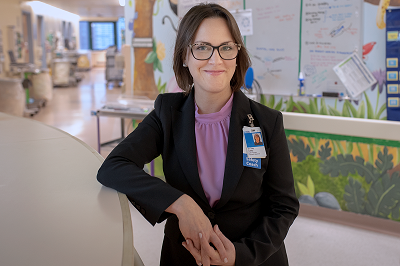Improving safety in health care by adopting “high reliability” principles used outside of health care
Summary:
New SickKids research shows that not all principles of high reliability are understood equally by health-care workers.
A high reliability organization (HRO) is an organization that succeeds in avoiding catastrophes despite working with hazardous and complex systems, such as air traffic control and nuclear power facilities. Health-care organizations frequently adopt the five key principles of HROs in their efforts to eliminate preventable harm, but studies about the perceptions of health-care workers at the centre of this effort are lacking.

Dr. Trey Coffey is the Medical Officer for Patient Safety at The Hospital for Sick Children (SickKids), and senior author of a study focused on how health-care professionals understand and enact HRO principles. HROs are one of the first things safety professionals learn about during training at the Centre for Quality Improvement and Patient Safety, or C-QuIPS, a joint partnership of teaching hospitals including SickKids.
Trey’s affiliation with C-QuIPS allowed her to connect with experts in HROs, as well as team members with advanced methodological skills, resulting in a paper published in BMJ Quality and Safety.
In the following Q&A, Coffey discusses the study, which explored how different professional groups in paediatrics perceive the HRO principles, including what’s working, what isn't working, and why.
How were participants selected to take part in the study?
All study participants were from SickKids, where we have a hospital-wide safety program called Caring Safely. Instead of choosing randomly, we used a method called purposive sampling. To achieve the greatest breadth possible within the sample, we selected one critical care area, one surgical care area, and one medical specialty care area. From each of those areas, we included a diverse set of roles – physicians, nurses, interprofessional staff, quality leads. Then we also intentionally included members of the Caring Safely steering committee.
What were the key findings?
We found very different levels of understanding between the different principles of high reliability. For example, the principle of "preoccupation with failure" seen in HRO, meaning that even a small deviation from what is expected can represent a significant risk, was in one sense a good "fit" in health care. Participants could readily describe many examples of how we enact this, for example by reporting safety events. On the other hand, the complexity of the health-care environment and constant risk of making a mistake – big or small – can also interfere with doing their job. The other challenge is that in health care we are under constant pressure to be efficient, often with limited resources. Staff described having to constantly balance taking their time to be careful with moving quickly to meet our patients’ needs.
Did you provide participants with a definition of each principle, or did you want them to rely on memory?
In the process of interviewing study participants, we prompted them by asking if they could recall examples as we named and briefly described each principle. We didn’t provide a fulsome explanation of the principle unless asked. In most cases, they expressed having heard of the principle, and then went into examples.
What HRO principle was less understood by staff?
That would be the principle of "commitment to resilience," which refers to processes and behaviours that allow us to effectively 'contain' a situation when something unexpected happens so that further disruption or safety issues are minimized. This is distinct from the concept of “personal resilience,” which is what participants tended to think of when asked about this principle. Enacting “commitment to resilience” requires proactive activities that prepare teams to do this well, such as simulation and team training. Though we do some of these activities in health care, we typically place the bulk of our attention and resources on reactive work.
Any surprises? Did you learn anything that would change your opinion about the use of an HRO mindset in health care?
A big surprise was that Kathleen Sutcliffe, one of the researchers who originally coined the term "HRO" decades ago, co-wrote an editorial in response to our paper, which validated the idea that there are gaps in the breadth and depth of HRO implementation in health care. The editorial discussed some reasons why the broader health-care sector has difficulty adopting safety concepts from other industries and asserted some ideas to change this, such as making more of an effort to learn why things usually go well instead of learning why things occasionally go wrong, addressing differences in the degree of staff participation in safety training, as well as tackling larger systemic risks that go beyond the level of one organization.
What was the key takeaway for you?
The differences in how each of the principles were understood were striking. This suggests that we shouldn’t think of, and teach, HRO as one monolithic idea and that we should deepen our focus on each of the five principles individually. I think we also realized that we are all probably making assumptions about how well our colleagues understand these concepts. In the future, this kind of safety program could do more to help leaders and staff understand the principles more deeply, so that they are more equipped to reflect and evolve their approaches to safety.
Do you have plans for further research in this area?
My immediate plans are to share the learnings here at SickKids and in the network of 145 children's hospitals, Solutions for Patient Safety, that we work with. Along with other leaders striving to advance safety through programs like Caring Safely, we will consider how to evolve training and support for health-care leaders to better equip them to deepen their practice of high reliability. As we continue this work, I look forward to future opportunities to partner with researchers in the interest of safety.

